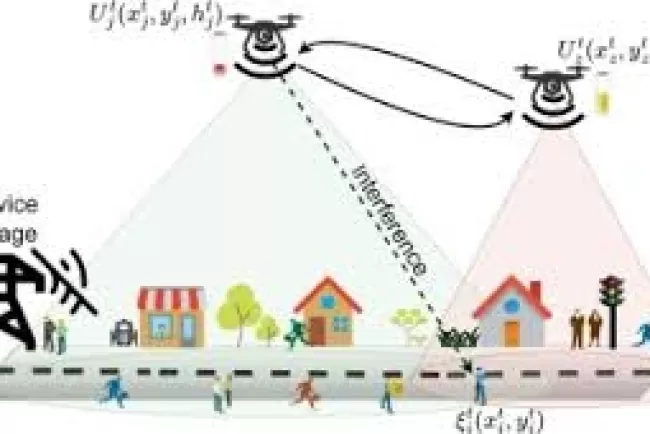TORCHLIGHT: Uncovering Cybersecurity Threats in Cloudless IoT Devices through Tor Traffic Analysis
The Internet of Things (IoT) has revolutionized the way we live and work, with forecasts predicting over 32 billion IoT devices by 2030. This rapid growth has led to the rise of cloudless IoT architectures, where devices communicate directly over the internet without relying on centralized cloud servers. While this model offers increased scalability, reduced latency, and better data control, it also exposes IoT devices to new risks, especially when they are directly accessible on the open internet.

A recent discovery has sent waves through the cybersecurity community: Tor traffic, typically associated with anonymous browsing, has been targeting cloudless IoT devices. While IoT devices in cloudless architectures have always been susceptible to attacks, the use of Tor by attackers to conceal their identity introduces a new level of sophistication. This revelation has prompted researchers to develop innovative solutions to defend against these threats.
The Problem with Cloudless IoT Devices
Cloudless IoT devices bypass traditional cloud infrastructure, which often serves as a barrier against cyberattacks. With direct access to the internet, these devices become prime targets for cybercriminals. The Akuvox smart intercom vulnerability, where attackers remotely accessed private conversations, highlights the risks associated with cloudless IoT systems.
What researchers found was even more alarming: Tor, a network typically known for its anonymity and not used frequently for attacking IoT devices due to latency concerns, was being leveraged by attackers. The anonymity it offers allows attackers to exploit vulnerabilities in cloudless IoT devices without revealing their identity. This discovery called for a new approach to security.
Introducing TORCHLIGHT: A Novel Threat Detection System
In response to this new challenge, the researchers introduced TORCHLIGHT, a cutting-edge system designed to detect both known and unknown threats targeting cloudless IoT devices through Tor traffic analysis. The key features of TORCHLIGHT are:
-
Tor Traffic Pattern Analysis: TORCHLIGHT identifies unique IP patterns associated with Tor traffic, distinguishing it from regular internet traffic. By filtering out these patterns, the system can detect malicious activity even in resource-constrained environments such as Virtual Private Servers (VPS).
-
Cost-Effective VPS Deployment: By deploying VPS nodes strategically, TORCHLIGHT optimizes traffic analysis without exceeding budget constraints. These VPS nodes, deployed based on Tor’s weighted bandwidth algorithm, increase the chances of detecting malicious traffic at a manageable cost.
-
LLM-Enhanced Threat Detection: Using advanced Large Language Models (LLMs) like ChatGPT, TORCHLIGHT applies a Chain-of-Thought (CoT) methodology to distinguish legitimate IoT traffic from malicious attempts. This process helps the system accurately identify suspicious patterns and prevent false positives.
Key Findings: The Scope of IoT Vulnerabilities Exploited through Tor
TORCHLIGHT’s analysis of 26 terabytes of traffic over a 12-month period uncovered disturbing findings:
- 45 vulnerabilities identified, with 29 zero-day exploits, including 25 CVE-IDs.
- These vulnerabilities included critical issues such as authentication bypass, arbitrary command execution, and information disclosure.
- 12.71 million devices across 148 countries were impacted, including major markets such as the U.S. and China.
- The market value of these vulnerabilities was estimated at $312,000.
The ability to exploit these vulnerabilities anonymously via Tor means that the threat landscape for cloudless IoT devices has become more complex and dangerous. This research highlights the urgent need for stronger security measures in the IoT sector.
TORCHLIGHT’s Design: Overcoming Challenges in IoT Threat Detection
The success of TORCHLIGHT lies in its ability to overcome several key challenges in IoT threat detection:
-
Limited Resources for Traffic Analysis: Analyzing Tor traffic is computationally intensive. TORCHLIGHT overcomes this challenge by deploying VPS nodes that balance cost and bandwidth, ensuring efficient detection without overwhelming resources.
-
Node Selection Probability: Due to Tor’s unique routing mechanisms, low-bandwidth VPS nodes are often overlooked in traffic routing. TORCHLIGHT optimizes its strategy by analyzing Tor’s source code, improving the chances that malicious traffic is observed by strategically deployed VPS nodes.
-
Diverse Threats: IoT devices come in many forms, each with unique vulnerabilities. TORCHLIGHT combines LLM-based recognition and domain-specific insights to detect even previously unknown threats, ensuring comprehensive protection.
Evaluation and Impact
The evaluation of TORCHLIGHT’s effectiveness demonstrated its superiority over traditional methods, especially in terms of cost-effectiveness and accuracy. It significantly improved the detection of IoT threats, even those involving Tor traffic, which was previously a blind spot in many cybersecurity systems.
The findings have far-reaching implications. They provide the first concrete evidence that attackers are using Tor to target cloudless IoT devices, opening up new avenues for research in both Tor-based cybersecurity threats and IoT protection. This research represents a crucial step in understanding and mitigating the risks faced by cloudless IoT devices.
Contributions and Future Directions
The key contributions of this research include:
- Discovery: For the first time, the use of Tor to target cloudless IoT devices anonymously has been documented.
- TORCHLIGHT Tool: A novel system that combines Tor traffic analysis, VPS deployment, and LLM-enhanced detection to identify threats in IoT systems.
- Security Implications: The research has exposed critical vulnerabilities in cloudless IoT devices, revealing the need for stronger security protocols.
Looking ahead, the researchers plan to expand TORCHLIGHT’s capabilities to detect a wider array of attacks and integrate it into real-time monitoring systems. This would allow for immediate response to emerging threats and help protect millions of vulnerable devices globally.
Conclusion: A Step Forward in IoT Security
This research has brought to light a pressing issue in IoT security—attacks on cloudless devices through the anonymity of Tor. TORCHLIGHT offers a promising solution by combining innovative traffic analysis techniques with cost-effective deployment strategies. As IoT devices continue to proliferate, it is vital to adopt new tools and approaches like TORCHLIGHT to safeguard these devices against increasingly sophisticated attacks.
As we continue to move toward a more interconnected world, the question remains: How can we further strengthen the security of cloudless IoT devices, particularly when facing anonymous and sophisticated threats like those exploiting Tor?
What's Your Reaction?

















